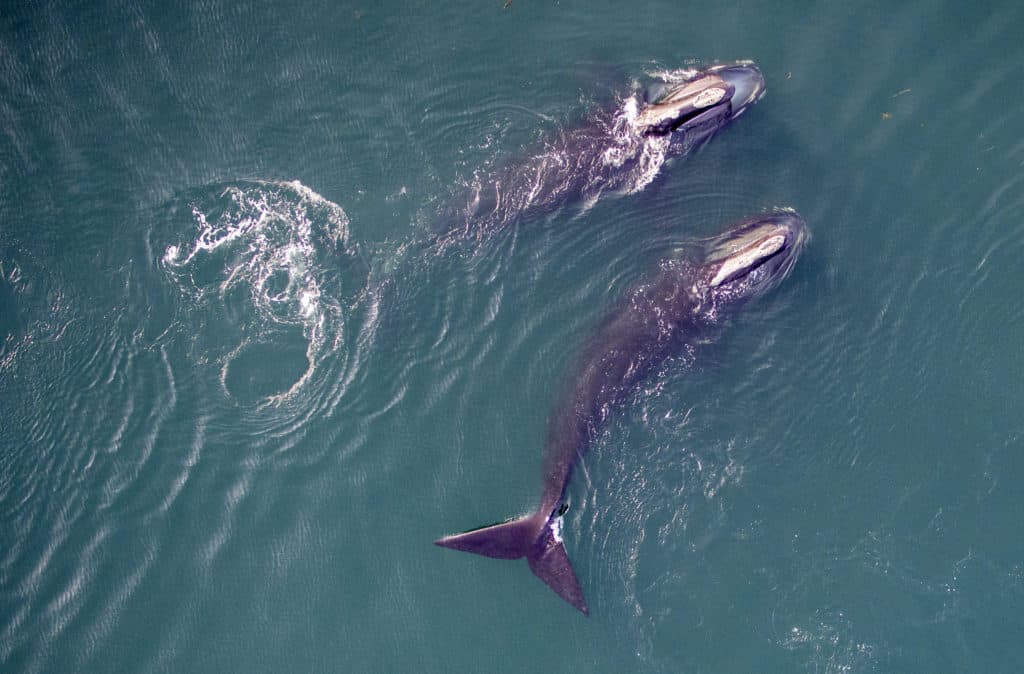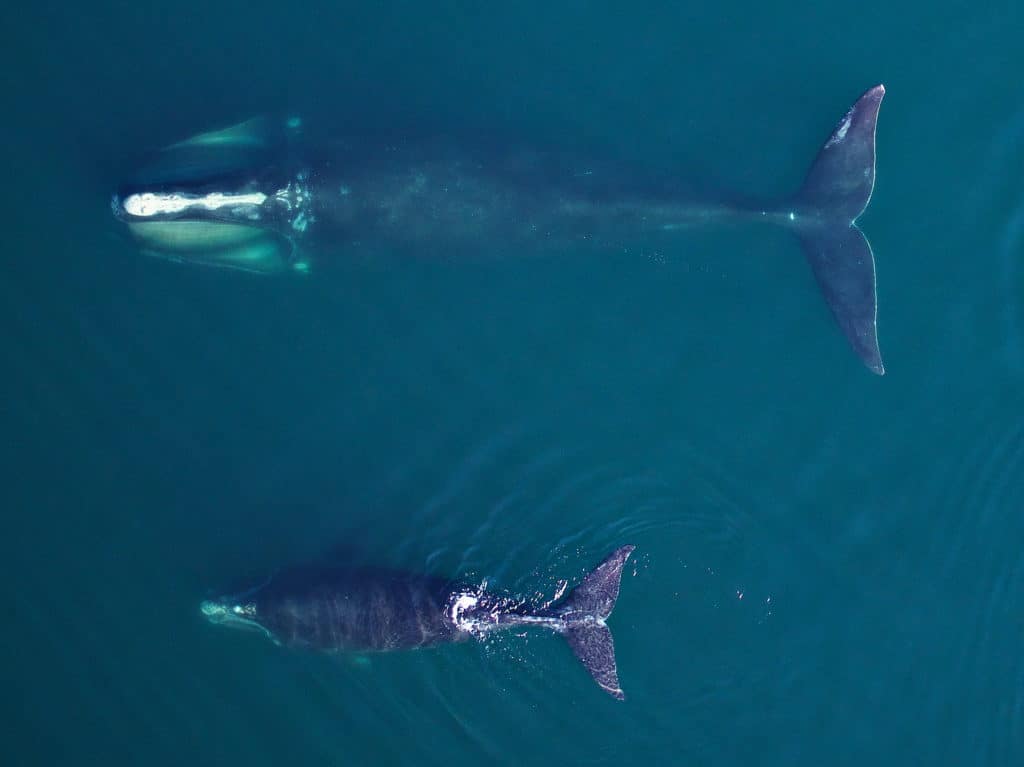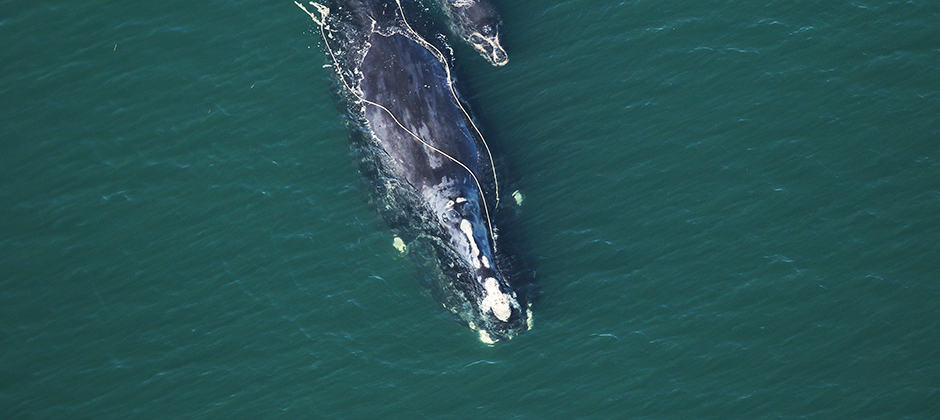Share this article
Whale entanglements affect future generations
When North Atlantic right whales get entangled in fishing gear, it can have long-term consequences for their populations. Not only can the energy cost of carrying the gear around cause the whales to become smaller, it can also result in them having fewer calves.
Frequenting the waters off the coast of New England and Canada, North Atlantic right whales (Eubalaena glacialis) live in busier parts of the ocean than their cousins, the southern right whale (Eubalaena australis). That brings risks of being struck by large vessels and getting tangled in fishing gear on top of the challenges they face from changing ocean conditions and prey availability due to a warming climate.
“These impacts are influencing population growth rates,” said Joshua Stewart, assistant professor at the Oregon State University Marine Mammal Institute. Since the 1980s, the New England Aquarium has been monitoring this population and recording a range of data, from individual health, ship strikes and entanglements to birthing events. Researchers from the NOAA Southwest Fisheries Science Center and the Woods Hole Oceanographic Institution have been capturing aerial photos of the same whales since the early 2000s, which can be used to measure a whale’s length and body condition.
Initial research showed that North Atlantic right whales are generally skinnier and in worse condition than southern right whales. New research is showing that entangled right whales are stunted compared to whales that have not experienced prolonged entanglements, and that the maximum length of whales has been declining steadily since the 1980s. Researchers estimate a whale born today will end up, on average, about a meter shorter than one born in 1980.
“Whales that are entangled can spend several months trailing around gear from fishing traps,” Stewart said. “It takes a lot of energy to drag that around, and they have to devote energy to that instead of growth.”
He and his colleagues wondered how this may affect their reproductive success. “Skinny whales are not happy whales,” he said.

North Atlantic right whales are declining in body size, which can lead to future effects on reproduction. Credit: Michael Moore and Carolyn Miller, under NMFS permit #21371
As a researcher at the NOAA Southwest Fisheries Science Center at the time, Stewart led a study published in Marine Ecology Progress Series examining how size may play a role in how often right whales have calves.
Since the condition of a female whale affects the condition of its offspring, Stewart and his colleagues wanted to use the long-term dataset to see what effect entanglements might have on offspring. “We know from previous studies in other whale populations that shorter and skinnier females produce smaller, skinnier calves,” he said. “We were interested in whether the size of a female also influences how often she successfully reproduces.”

A drone captured this photo of an adult North Atlantic right whale mother with her young calf in Cape Cod Bay in April 2019.
Credit: Jacob Barbaro and Brandon Tao, under NMFS permit # 21371
Their findings showed that shorter females had fewer calves and the time between pregnancies was longer. The researchers believe that smaller females had a greater portion of their energy stores depleted by nursing a calf, requiring them to rest for longer periods before reproducing again.
These low birth rates add an additional challenge to right whale conservation, Stewart said, but there’s some good news. Since the effect is related to entanglements, which are also a major driver of mortality in this population, by reducing entanglements, “it doubles the bang for your buck,” he said.
Header Image:
A North Atlantic right whale swims alongside a new calf.
Credit: Florida Fish and Wildlife Conservation Commission under NOAA permit 20556.








